The Cat Island: Lighting the Way Home for Stray Cats
In the slanting afternoon sunlight, a calico cat dozes inside a wooden cabin, while a tabby chases playfully by a hand-painted wall, and a giant cat teaser sways gently in the breeze. This peaceful scene occurs in Gucun Town, Baoshan District, where an abandoned kindergarten has been transformed into an urban “cat island”, a dream haven for over 300 stray cats. As Shanghai’s first science education center for community-based stray cat management, this cat island also serves as a pioneer exploring new models of harmonious coexistence between humans and animals in urban spaces.
A warm haven: building a safe harbor for stray lives
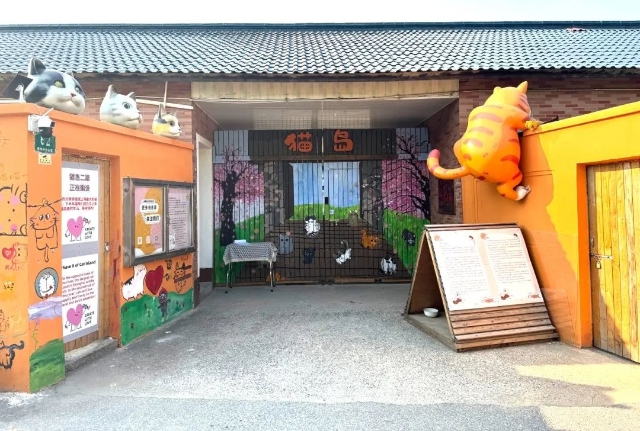
“Alang, this will be your new home from now on!”
At the “Civil Affairs Hall” of the Cat Island, Mr. Xu, a local resident, entrusted his stray cat “Alang” of three years to the staff, his eyes filled with reluctance and sadness. Due to a job transfer, he could no longer care for Alang and chose to bring him here.
Handing over a registration form, a staff member said, “We will give him a full medical check-up and keep him under observation. After vaccination and neutering, he’ll be ready to join the cat community.”
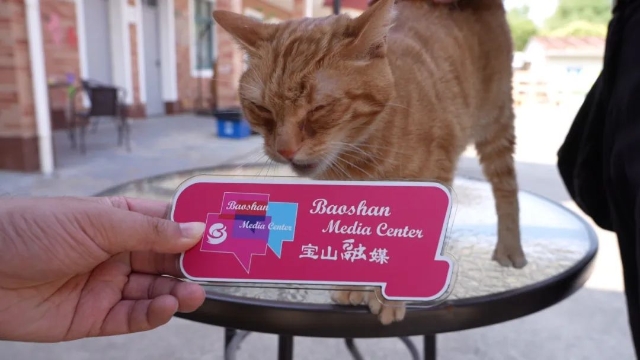
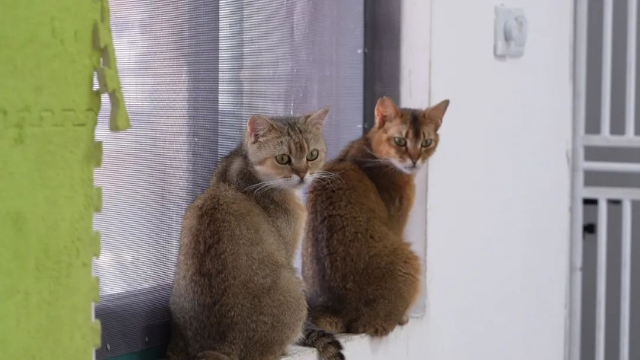

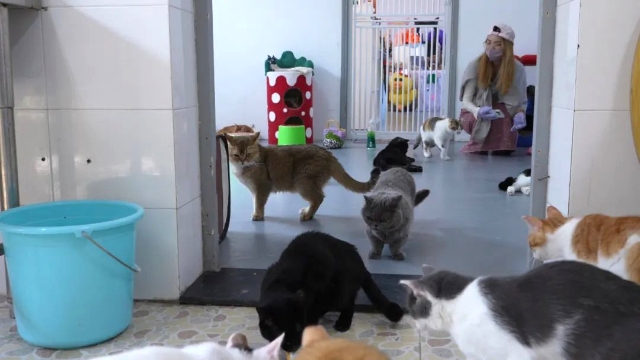
Stray cats like Alang often have difficult pasts—some were rescued by residents, while others were surrendered by owners who could no longer care for them. Upon arrival, every new member goes through a “health admission” process: a comprehensive check-up to rule out infectious diseases, followed by vaccinations and neutering tailored to their condition. After a period of quarantine and adjustment, they are free to roam the Cat Island.
“We aim to create a safe, semi-free-range community,” explained Mr. Zha, the head of the Cat Island. “We’ve also raised the fences and walls to ensure both the cats’ freedom and their safety from getting lost. In addition, a team of staff and cat-loving volunteers provide dedicated care and management.”
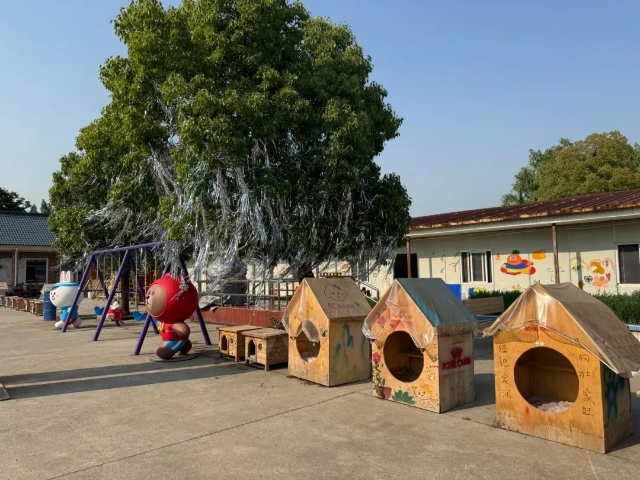
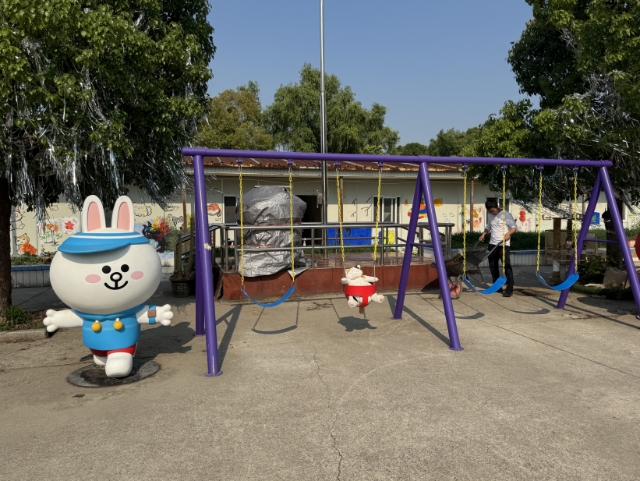
Spanning 1,765 square meters, Cat Island is equipped with wooden cabins, climbing frames, swings, giant cat teasers, and other amenities. More than that, the former kindergarten classrooms have been thoughtfully repurposed to create a fully functional layout. There’s a “Civil Affairs Hall” for adoption registration, a “Quarantine Zone” for new arrivals, a “Kitten Garden” that shelters kittens under six months old, a “Senior & Special Care Home” for elderly and disabled cats, and even a cat café that offers food and beverages, part of a disability-support initiative. Here in this “happy haven,” cats that wouldn’t survive in the wild can live freely and comfortably while awaiting their forever homes.
Looking ahead, the second phase of Cat Island will convert 30 mu (roughly 5 acres) of riverside woodland into a fully ecological cat community, giving the cats an even larger natural space to explore.
Cats are on duty: adorable guides in a science classroom

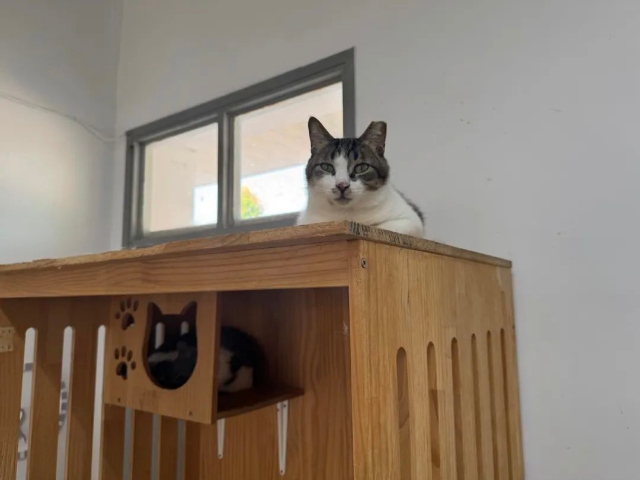
In the “Cat Academy” of Cat Island, Mr. Liu was reading a science panel with great interest when he suddenly felt a weight on his shoulder. A tabby had silently leapt up, rubbing its round head against his cheek and purring with delight. “We came here specifically for the stray cat science center,” Mr. Liu smiled, gently petting his “tiny supervisor” on the shoulder. “I didn’t expect them to be so friendly—like old friends, they came over to accompany us in learning. All my work stress just melted away. It’s incredibly healing.”


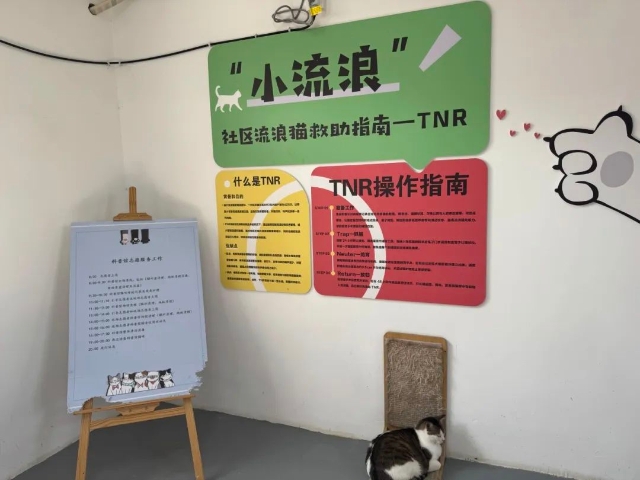
Cat Island is not just a shelter for cats—it also gives them a special “role” to play. More than 120 unique feline “instructors” reside in the Cat Academy—mostly abandoned pedigree cats or domestic mixed breeds who lack the skills to survive in the wild but show a natural affection for people. Now, they have become little “science guides,” using their own language—gentle rubs, curious sniffs, lazy companionship, and occasional playfulness—to accompany visitors in immersive learning about responsible pet care. This innovative approach of “teaching through companionship” makes the science experience both warm and joyful.
“What makes the Cat Academy special is how it brings cold science to life—making it tangible and full of warmth,” explained Mr. Zha, the head of Cat Island. “We provide a systematic introduction to stray cat care, while the cats themselves serve as the most vivid embodiment of that knowledge. When visitors see them snuggled up in trust and hear their contented purrs, they naturally understand and become involved in the refined management of stray animals in cities.”
Inside the center, informative displays introduce the complete closed-loop model for stray cat management, the TNR (Trap–Neuter–Return) concept, guidelines for responsible feeding, disease prevention, and knowledge of various cat breeds—promoting science-based and civil pet ownership. Since opening in April, it has welcomed tens of thousands of visitors.
Smart governance: building a closed-loop model for human-cat coexistence

As a pilot project under the Three-Year Action Plan for Civilized Pet Ownership in Shanghai, Cat Island adopts a multi-party governance model driven by government leadership, social collaboration, and public participation. Its core value lies not only in offering adoption platforms and shelter for stray cats, but also in working with local subdistricts, parks, and universities to explore co-governance of urban stray cat communities.
“Stray cats mainly come from abandonment, getting lost, and uncontrolled reproduction, so managing the source is crucial,” said Zhou Min, Deputy Director of the Shanghai Yicai Feiyang Public Welfare Foundation. “We tailor plans for different communities, offer training, organize volunteer teams, and implement the TNR model for managing stray cats.”
TNR, short for Trap, Neuter, and Release, is internationally recognized as the most humane and effective way to manage and reduce stray cat populations.
After initial surveys and planning, Cat Island staff work with community volunteers to capture stray cats, perform sterilization surgeries, and release them either back into the community or the center—using multiple methods to control population size and diversity.
Building on the traditional TNR model, Cat Island has innovatively added adoption and public education components—forming a more complete cycle: Trap, Neuter, Release, Adopt, and Educate. Through social media and on-site events, the project raises awareness about stray cat management and adoption, encouraging community-wide participation and creating a sustainable governance system.
To date, the project has reached 1,756 communities and performed sterilization and managed release for 7,432 stray cats, significantly promoting harmonious coexistence between people and cats.

When a city learns to treat lives gently, every creature can find its rightful path home in the soil of compassion. “Lighting the Way Home.” As the Cat Island mission declares, this is not only a safe haven for stray cats, but also a beacon of science-based governance and community collaboration. In the future, may more “Alangs” find a fresh start here—a new life filled with love.

宝山汇APP

上海宝山微信

上海宝山微博